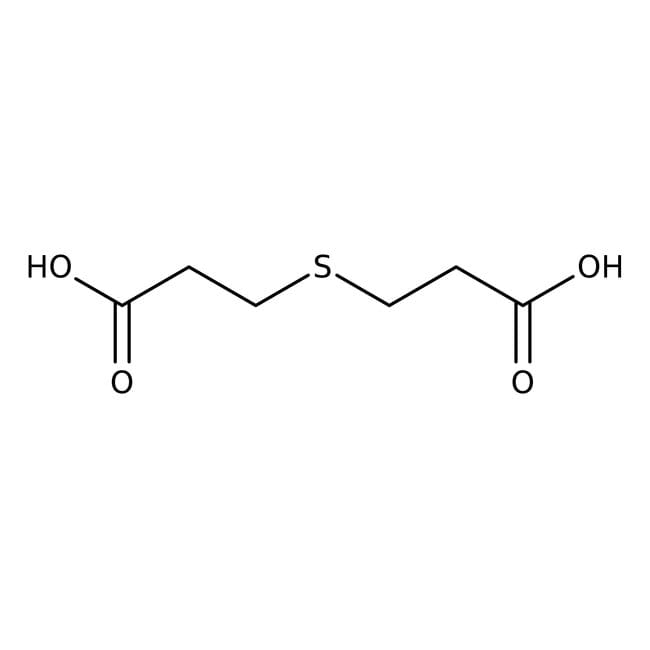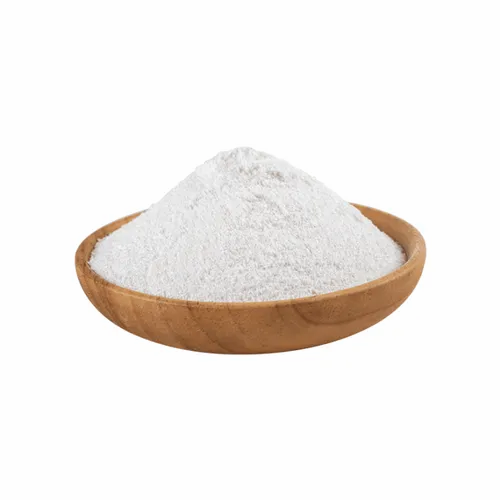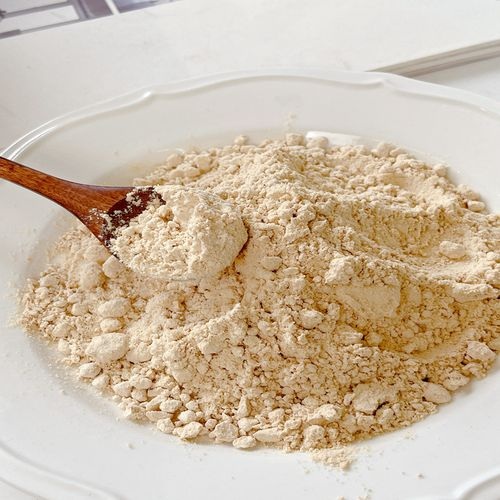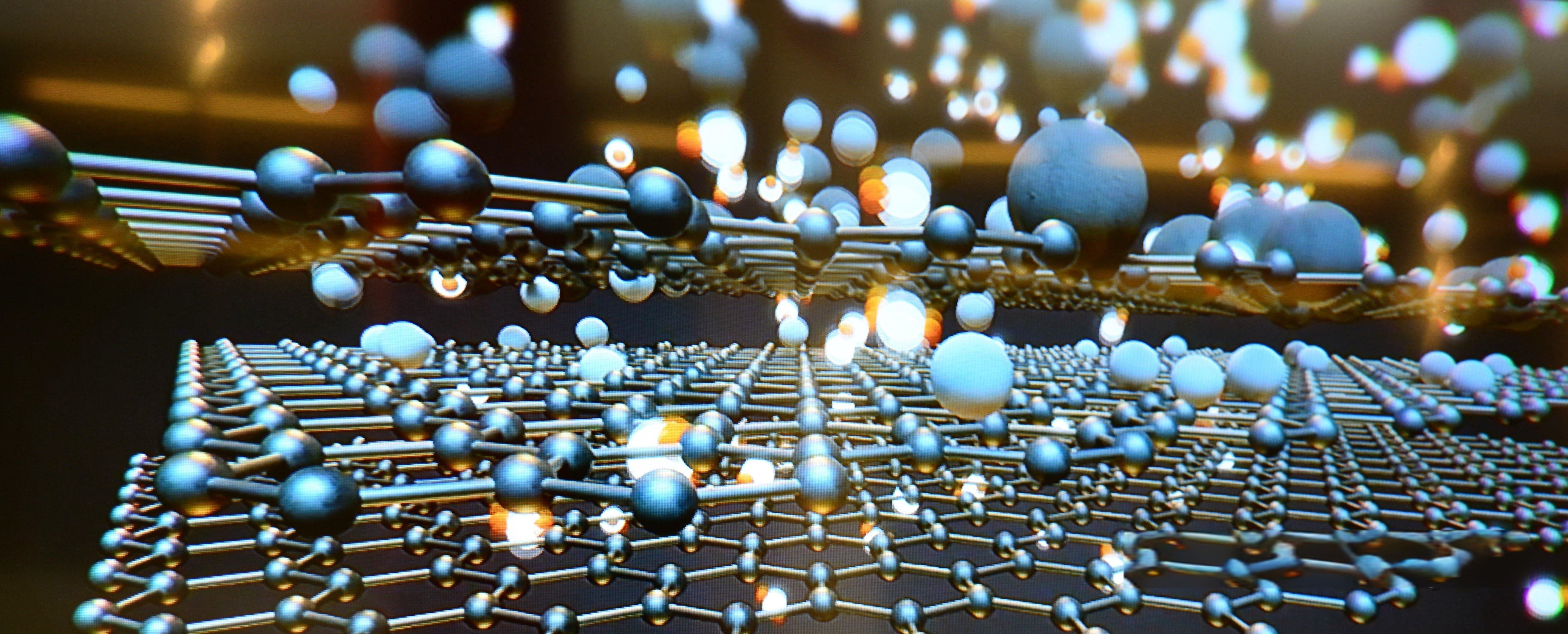Exploring the Benefits of Antioxidant 3,3′-Thiodipropionic Acid (TDPA)
Antioxidants play a vital role in health by counteracting free radicals, which contribute to cellular damage, aging, and various diseases. They are equally indispensable in industry, where they prevent oxidation and prolong product shelf life. 3,3′-Thiodipropionic Acid (TDPA)(CAS No. 111-17-1) exemplifies a potent antioxidant with the molecular formula C6H10O4S2. TDPA’s distinctive structure includes an ethylene (propionic acid) chain connecting two carboxyl groups at the third carbon position, along with a sulfur atom linking two carbon atoms. This composition renders TDPA highly effective as both a stabilizer and antioxidant across diverse applications.

Chemical Structure and Properties of TDPA
Chemical Structure of TDPA
3,3′-Thiodipropionic Acid (TDPA) is a thiocompound represented by the molecular formula C6H10O4S2. Its structure features an ethylene (propionic acid) chain that links two carboxyl groups positioned at the third carbon. Additionally, a sulfur atom bridges two carbon atoms, forming a distinct thiol structure. This configuration endows TDPA with multiple reactive sites crucial for its antioxidant efficacy.
Physical and Chemical Properties of TDPA
TDPA is a crystalline solid known for its good solubility in both water and organic solvents, facilitating its application versatility. It exhibits robust stability at elevated temperatures and shows high resistance to oxidation, making it suitable for demanding industrial processes. TDPA’s ability to chelate metal ions further enhances its utility by mitigating oxidative degradation in biological and industrial systems.
Mechanism of Antioxidant Action
Functionality as an Antioxidant
TDPA functions primarily through its thiol group, capable of donating hydrogen atoms to neutralize free radicals. This mechanism disrupts the chain reactions of lipid peroxidation, crucial for preserving cellular membranes and structural integrity. Additionally, TDPA’s dual carboxyl groups augment its capability to scavenge reactive oxygen species (ROS), thereby enhancing its overall antioxidant potency.
Role in Free Radical and ROS Scavenging
TDPA’s antioxidant properties extend to scavenging free radicals and ROS, highly reactive molecules implicated in cellular damage. By neutralizing these species, TDPA mitigates oxidative stress and supports cellular health. Its capacity to bind metal ions further reduces oxidative catalysts, presenting a comprehensive approach to antioxidation.
Industrial Applications of TDPA
Polymer Stabilization
In polymer stabilization, TDPA plays a pivotal role in safeguarding materials like polypropylene and polyethylene from degradation. By neutralizing free radicals generated during processing and use, TDPA extends the longevity and performance of these polymers. It also serves as a heat stabilizer for polyoxyethylene ether, enhancing durability under varied conditions.
Lubricants and Oils Enhancement
TDPA serves as a crucial intermediate in the production of thioester antioxidants for lubricants and oils. Antioxidants like Dilauryl Thiodipropionate (DLTP) and Dioctadecanthiodipropionate Ester (DSTP), derived from TDPA, bolster the stability and functionality of lubricants and oils by impeding oxidative degradation. This application significantly extends product shelf life and reliability in industrial settings.
Heat Stabilization
TDPA’s efficacy as a heat stabilizer is instrumental in applications involving polyoxyethylene ether, where thermal stability is critical. Its ability to maintain structural integrity under high temperatures enhances the performance and resilience of industrial products subjected to thermal stress.

Health Benefits of TDPA
Potential Health Benefits as a Dietary Supplement or Therapeutic Agent
3,3′-Thiodipropionic Acid (TDPA) provides significant health benefits when used as a dietary supplement or therapeutic agent. Its potent antioxidant properties play a crucial role in neutralizing free radicals, thereby reducing oxidative stress and preventing cellular damage. This protective action is vital for maintaining overall health and potentially lowering the risk of chronic diseases such as heart disease, diabetes, and neurodegenerative disorders. Additionally, TDPA supports the body’s natural defense mechanisms, contributing to improved immune function and overall well-being.
Research Findings on its Role in Oxidative Stress Management and Disease Prevention
Research underscores TDPA’s effectiveness in managing oxidative stress and its potential for disease prevention. Studies demonstrate that TDPA mitigates oxidative damage in various biological systems, promoting cellular health and longevity. In food-grade applications, TDPA preserves the quality and flavor of perishable items like dairy products, meats, and baked goods by preventing the oxidation of fats and oils. This preservation helps maintain the nutritional integrity and safety of these foods, which is crucial for public health.
Other Application Fields
Beyond health benefits, TDPA serves as a versatile compound in several industries. In pharmaceutical synthesis, it is essential for producing compounds like thiodipropionic acid amide, used in the manufacturing of antibiotics and anticancer medications. Additionally, TDPA is a valuable antioxidant in the personal care industry, where it stabilizes cosmetic formulations such as facial cleansers, beauty creams, and shampoos. By preventing oxidation and stabilizing peroxides, TDPA extends the shelf life and efficacy of these products, while also providing protective benefits for the skin.
Environmental and Sustainability Aspects
Eco-Friendly Aspects of TDPA
TDPA exhibits eco-friendly characteristics that align with sustainable industrial practices. Its use as an antioxidant reduces reliance on more harmful chemical stabilizers, thereby lowering the environmental impact of industrial processes. Furthermore, the efficient synthesis of TDPA minimizes waste production and energy consumption, contributing to a more sustainable chemical industry overall.
Considerations Regarding Biodegradability and Impact on Ecosystems
The biodegradability of TDPA is a critical consideration for its environmental impact. Studies indicate that TDPA can break down into non-toxic components under suitable conditions, reducing the risk of long-term environmental contamination. This property makes TDPA preferable over non-biodegradable antioxidants, as it mitigates the potential for ecosystem disruption. Careful application of TDPA in various industries ensures minimal impact on water sources, soil health, and wildlife, promoting environmental balance and sustainability.
Final Words
3,3′-Thiodipropionic Acid (TDPA) is recognized for its potent antioxidant properties and versatile applications across health, industry, and environmental sustainability. Its distinctive chemical structure enables effective neutralization of free radicals, thus reducing oxidative stress and protecting cells from damage. TDPA plays pivotal roles in preserving food quality, advancing pharmaceutical formulations, and enhancing personal care products, underscoring its broad utility. Moreover, TDPA’s eco-friendly attributes and ability to biodegrade make it a sustainable choice for diverse industrial processes. Ongoing research and expanding applications continue to reveal TDPA’s significant contributions to health promotion and environmental responsibility, solidifying its importance in contemporary science and industry.
Access Our Product Catalog and More to Discover High-Performance Chemicals Tailored to Your Business Needs





